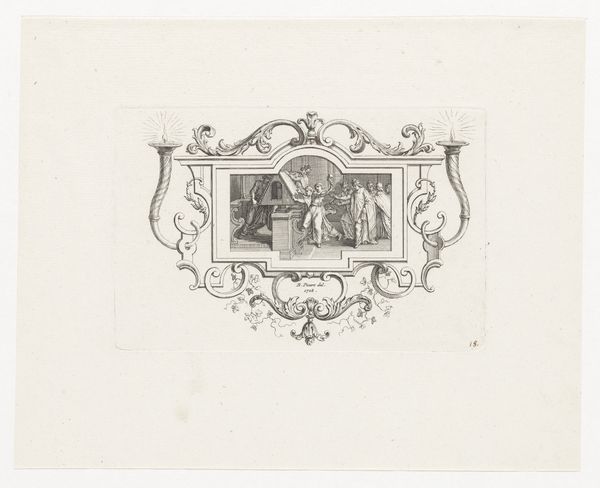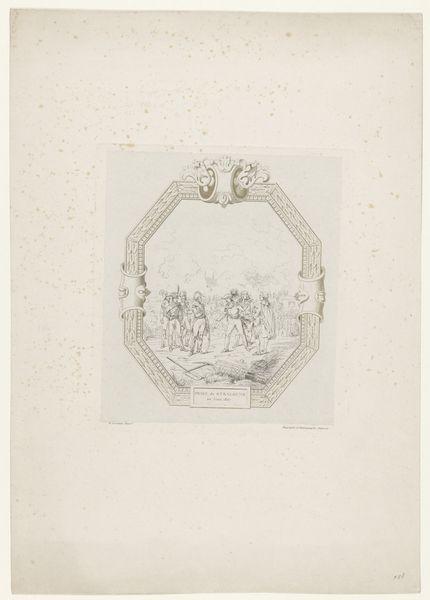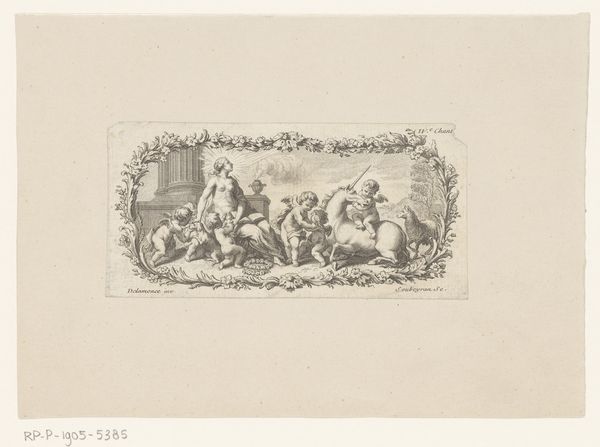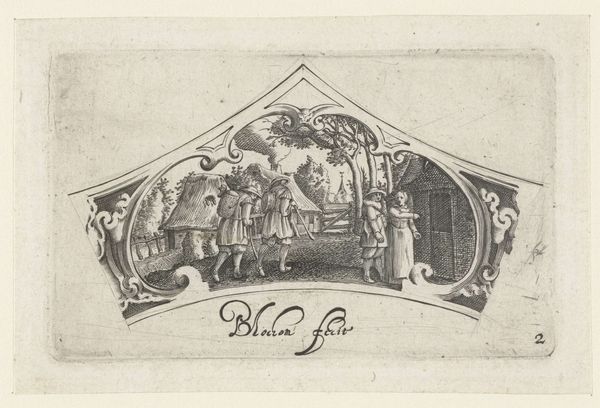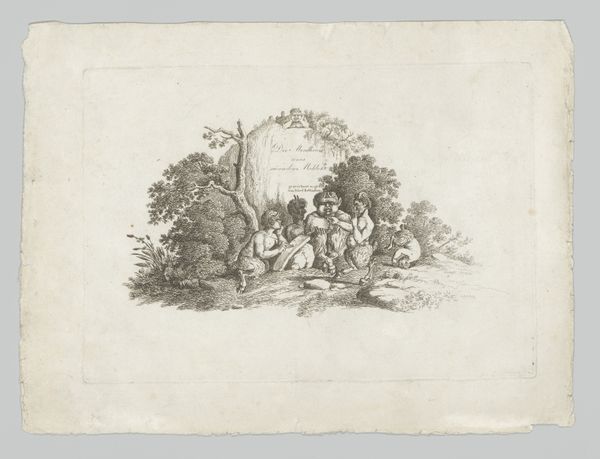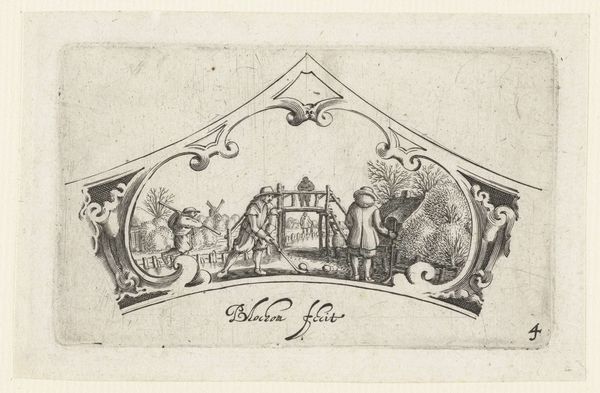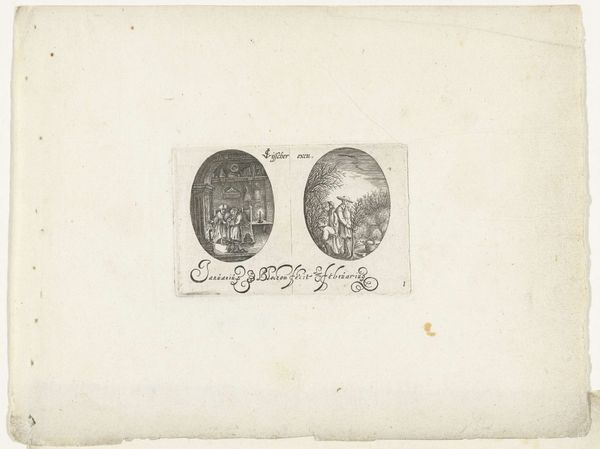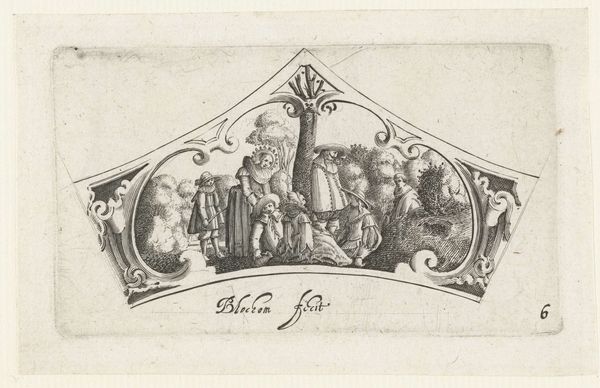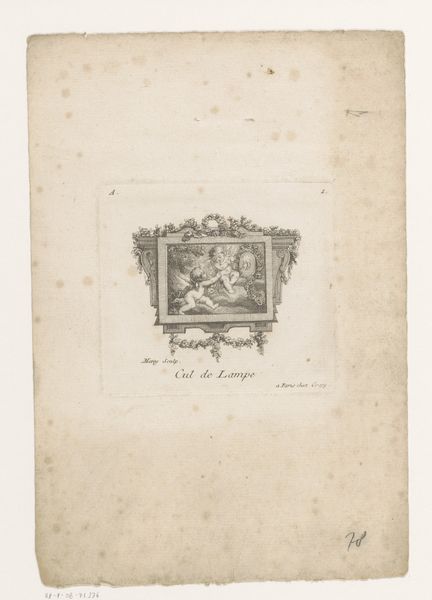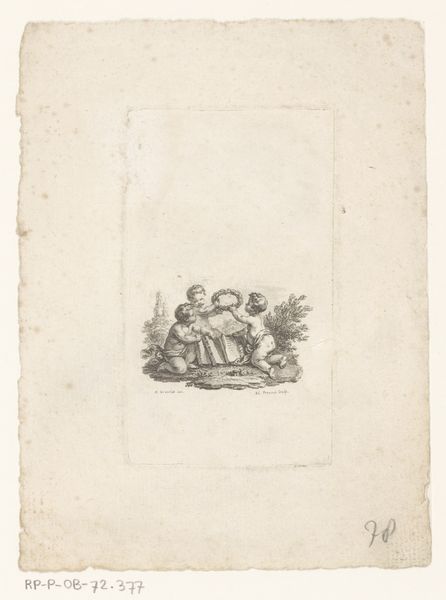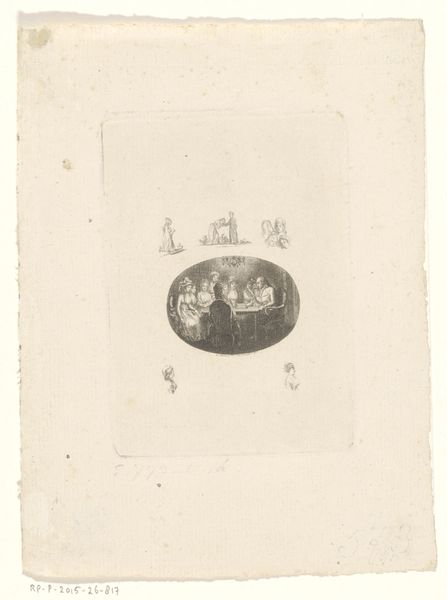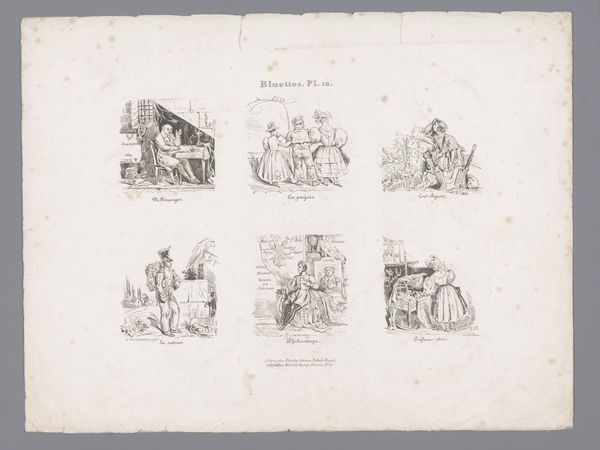
drawing, print, ink, engraving
#
drawing
#
baroque
# print
#
old engraving style
#
landscape
#
figuration
#
ink
#
pen-ink sketch
#
genre-painting
#
engraving
Dimensions: height 57 mm, width 96 mm
Copyright: Rijks Museum: Open Domain
Curator: This is “Four Figures on the Ice”, an engraving by Bartholomeus van Lochom dating from around 1630, currently held in the Rijksmuseum. Editor: It has a rather serene, melancholic mood, wouldn't you say? The figures appear small against a vast, frozen landscape. I immediately think about the impact of the Little Ice Age and its social impact at the time. Curator: Indeed. This piece gives us a fascinating glimpse into the social pastimes of the Dutch Golden Age. Van Lochom excelled at capturing these everyday moments. The frozen canals of the Netherlands offered recreation, but also functioned as crucial transportation arteries, particularly in winter. Editor: Absolutely. Considering that van Lochom’s practice often intertwined with printmaking, do you believe this imagery accessible or consumed differently when it moved out of the fine art spaces? Who could afford it, and how it reflected or perpetuated particular societal values related to leisure and class? Curator: Good point! While affordable prints broadened access to art, ownership still correlated with socio-economic standing. Depictions of leisure affirmed status, reflecting societal hierarchies even in seemingly innocuous genre scenes. Editor: And that framing itself... that ornate edging around the scene. Is that common for prints of this era? Does that shape serve any purpose? Curator: You see this often in prints of the era intended for bookplates or even decorations for small keepsakes and boxes. But thinking about it from your viewpoint, the elaborate frame sets a theatrical stage; it emphasizes the constructed nature of the scene. Editor: Right! And by emphasizing that artifice, it perhaps reveals underlying dynamics and assumptions about who gets to participate and what kind of identities and values get to be expressed within a scene. Curator: Examining details of van Lochom's compositions like this opens discussions on accessibility, privilege, and historical narratives woven into everyday imagery. It is so essential we interpret and contextualize artworks for wider audiences, moving past what is depicted at first glance. Editor: Precisely. Looking at van Lochom’s figures in terms of representation can offer powerful insights and spark critical dialogues with past and present cultures, especially now, thinking about leisure or lack thereof.
Comments
No comments
Be the first to comment and join the conversation on the ultimate creative platform.

